

A three-volume program for children that teaches Spanish in a fun and simple way




A three-volume program for children that teaches Spanish in a fun and simple way

KLETT WORLD LANGUAGES is a publishing house specializing in print and digital instructional materials for learning and teaching world languages.
Our mission is to help students become global citizens by developing their intercultural and critical thinking skills through language learning. We aim to help students learn and use language in real-life situations by creating engaging and meaningful content that sparks their curiosity and motivates them to learn.
We strongly believe that teachers play a key role in language learning, and part of our mission is to support them and to provide ample opportunity for professional development.
Having them is not enough. We live by them.
Because everyone on the core KWL team has a background in education and works closely with educators and students, our commitment goes far beyond our daily work. We understand the needs of educators and students and we are passionate about looking for solutions and tools to help them succeed.
We are committed to providing high-quality print and digital content at affordable prices to all who want to learn a language. We guarantee lower prices for high-quality content and simple, easy-to-use technology.
We view languages as tools for communication and action. To learn a language and build authentic communicative competency, students need a realistic context, a true need to communicate, a focus on meaning, and the right linguistic resources. That is what we provide in our educational materials.
Our educational materials focus on the most current pedagogical methodology. They follow the ACTFL Guidelines for Proficiency, include Can-Do statements, and address the 5 Cs. Our digital resources provide original and authentic content via a simple and easy-to-use platform.
We see educators as our partners, and the core of our mission is to support them by providing professional development opportunities, highquality documents and activities, and instructor resources in an easily accessible format.
Our content is created to help students use language to communicate and interact with other communities and cultures both in the United States and abroad. Our books present a respectful, modern, and open-minded perspective of our world and its cultures that allows students to dismantle stereotypes and to cultivate an awareness of global concerns.
ALBA Y GAEL is an interactive and innovative Spanish program for younger learners aligned with ACTFL World-Readiness Standards. This three-volume program for elementary school students uses diverse resources to immerse young students in the Spanish language. With ALBA Y GAEL, the Spanish classroom becomes a fun space where students develop 21st-century skills, such as collaboration, creativity, critical thinking, and communication.
ALBA Y GAEL is...
A student-centered, 21st century, comprehensive language and culture program
A communicative program where real-world language and projects take center stage
A fun, meaningful, and motivating approach to the Spanish language
A gateway to culture and language throught authentic materials
An invaluable tool for differentiation and accessibility
A program striving to make learning engaging, relevant, and impactful
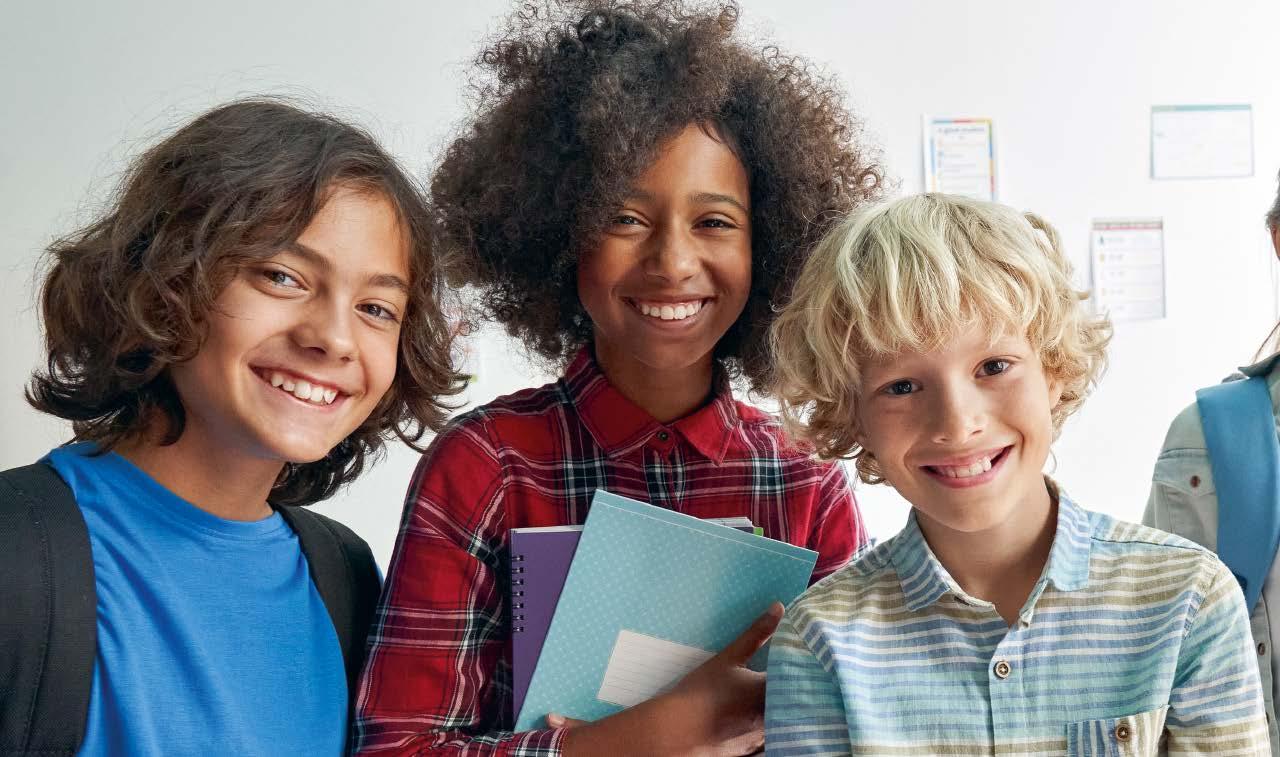
ACTFL World Readiness Standards and a proficiency-based aproach lie at the heart of ALBA Y GAEL:
An interactive Spanish language and culture program specifically designed for students ages 7-11
ALBA Y GAEL follows a progressive approach, where each unit concludes with a real-world project
The three modes of communication —interpretive, interpersonal, and presentational— are integrated into the lesson sequences
where students first focus on meaning, then on structures
Standards-based:
ALBA Y GAEL activities integrate the 5 Cs throughout each unit
The program promotes diverse perspectives, cultural understanding, and real-world global awareness
ALBA Y GAEL consists of three levels, progressing from Novice Low to Intermediate Mid proficiency.
ALBA Y GAEL follows the daily life of Alba and Gael, two cousins who live in different countries: Alba lives in Spain, and Gael in Mexico.





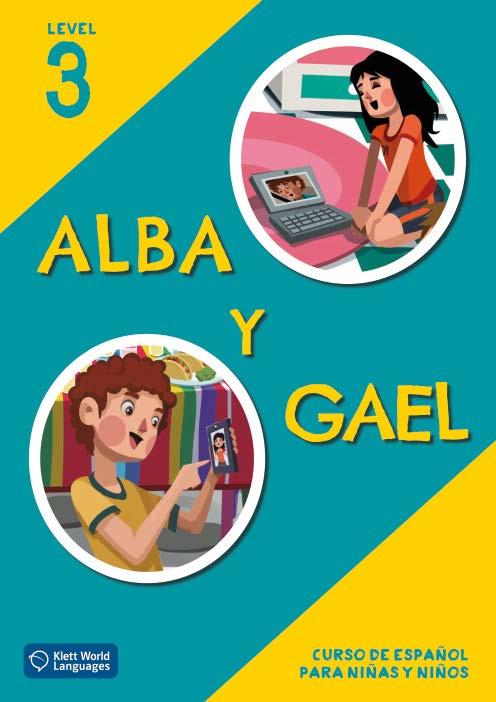

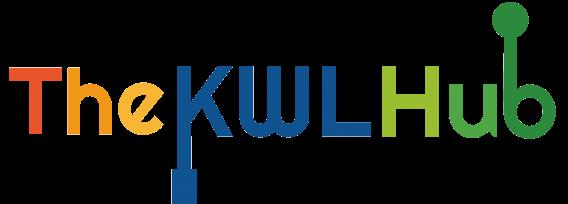
The KWL Hub is a platform offering digital content and resources for students and teachers who work with ALBA Y GAEL. It is designed with a clear purpose in mind: to improve teaching and learning experiences in elementary school environments with engaging content and helpful, user-friendly tools.
The KWL Hub is easy, flexible, and intuitive for all users. It includes a variety of resources, as well as robust functionalities that allow teachers to personalize the textbooks, assign homework, correct students’ work, offer feedback, create their own content, track the progress of each student, etc.
The
KWL Hub is
available as a website and as an app.
Compatible with:
- Smartphones and tablets: iOS and Android. - Computers: Windows, Mac, Chrome OS and Linux.
The KWL Hub features the following components and resources:
• An interactive version of the Student Edition
• An interactive version of the Workbook
• An eBook version of the Student Edition
• An eBook version of the Workbook
• Videos
• Audio files with scripts
• Spanish-English and English-Spanish Glossaries
• Cut-outs
• …and more!

WORKBOOK
Interactive, browser-friendly versions with sizeadaptable pages that allow for a full digital learning experience. Students can write directly in the writing fields, record themselves, self-correct, re-do activities, attach files and send all of their work to the teacher.
EBOOK VERSIONS OF THE STUDENT EDITION AND THE WORKBOOK
eBook versions that allow teachers and students to browse through all the pages and grant them access to all of the video and audio files.
Unidad O BIENVENIDOS
(p. 10)
Unidad 1 ¡HOLA! (p. 16)
Unidad 2
EL CUMPLEAÑOS DE GAEL
(p. 28)
Unidad 3
LA CLASE DE MÚSICA
(p. 40)
Unidad 4
LA CASA DE GAEL
(p. 52)
Unidad 5 ALBA "MINICHEF"
(p. 64)
Unidad 6
LA TIENDA DE MASCOTAS
(p. 76)
MINIDICCIONARIO
(p. 88)
RECORTABLES
(p. 106)
• Saludar.
• Deletrear.
• Decir el país y la nacionalidad.
• Saludar y despedirse.
• Presentar y presentarse.
• Preguntar y responder ¿Qué tal?
• Identificar objetos.
• Felicitar.
• Ofrecer y recibir regalos.
• Preguntar y decir la edad.
• Expresar la posesión.
• Hablar sobre la familia y el parentesco.
• Preguntar y decir la nacionalidad.
• Preguntar e informar sobre la existencia de un objeto.
• Expresar cantidades.
• Hablar de operaciones matemáticas.
• Hablar sobre la rutina y las actividades escolares.
• Hablar sobre la casa y las partes de la casa.
• Situar objetos.
• Describir actividades diarias.
• Expresar deseos.
• Expresar gustos sobre alimentos y bebidas.
• Expresar necesidades.
• Hablar de los ingredientes de un plato o de una receta.
• Preguntar y hablar de gustos y preferencias sobre animales y mascotas.
• Explicar y argumentar.
• Hacer descripciones.
• Saludos.
• El abecedario.
• Los miembros de la familia.
• Países de habla hispana y las nacionalidades.
• Saludos y despedidas.
• Los colores.
• Objetos cotidianos.
• La familia.
• Los números del 0 al 15.
• Los regalos y los objetos de una fiesta de cumpleaños.
• Expresiones: ¡Feliz cumpleaños!…
• El material escolar.
• Los instrumentos musicales.
• Los números del 16 al 30.
• La rutina y las actividades escolares.
• Las partes de la casa.
• Los muebles.
• Los días de la semana.
• Las actividades cotidianas.
• Alimentos y bebidas.
• Las frutas.
• Algunos verbos relacionados con la cocina.
• Las mascotas.
• Adjetivos para describir.
• Las partes de los animales.
• Repaso del léxico de otras unidades.
• Me llamo / se llama.
• Verbo ser: soy mexicano/a, soy español/a.
• Me llamo, te llamas, se llama.
• Los artículos: un/una.
• El masculino y el femenino en los sustantivos.
• ¿Qué es? Es un… / Es una
• La concordancia.
• El verbo tener.
• La preposición de.
• El artículo definido: el, la, los, las
• Los posesivos: mi, tu, su
• Los artículos en plural: los/las, unos/unas
• La concordancia del adjetivo en singular y plural.
• ¿Cuántos/as…?
• El verbo haber.
• El presente singular de los verbos terminados en –ar.
• El presente singular de los verbos terminados en -ar, -er, -ir.
• El verbo estar.
• Las expresiones de lugar.
• De + el = del.
• El verbo querer.
• ( No) Me/te/le gusta(n).
• Arte mexicano: Frida Kahlo.
• La caja de Español.
• Familias de todo el mundo.
• Mi cumpleaños.
• Músicas del mundo.
verbos mundo.).
• ( No) me gusta mucho, no me gusta nada.
• El presente singular y la primera persona del plural.
• Los demostrativos: este, esta, estos, estas.
• La tercera persona de los verbos en singular y en plural: Este loro es… / Estos loros son…
• ¿Por qué…? / Porque…
Hola soy Alba.


• Arte español: Joan Miró.
• Mis personas favoritas.
• Una parte de la casa.
• Alimentos del mundo.
• El batido de frutas.
• Animales del mundo.

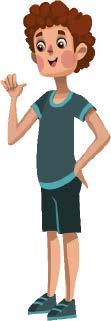
• El libro de las mascotas de la clase.
Yo soy Gael.
Unidad O ¡QUÉ SORPRESA! (p. 10)
Unidad 1
EL EQUIPO DEL BARRIO (p. 18)
Unidad 2
EL ROPERO DE GAEL (p. 30)
Unidad 3
LA FIESTA DEL COLEGIO
(p. 42)
Unidad 4
EL BARRIO DE GAEL (p. 54)
Unidad 5
VAMOS A LA GRANJA
(p. 66)
Unidad 6
VACACIONES EN MÉXICO
(p. 78)
MINIDICCIONARIO
(p. 90)
RECORTABLES
(p. 106)
• Saludar y despedirse.
• Dar información personal.
• Hablar sobre la familia.
• Hablar de gustos y de preferencias.
• Expresar emociones y estados de ánimo.
• Describir físicamente a una persona.
• Expresar la lateralidad.
• El abecedario.
• Saludos y despedidas.
• Los colores.
• Los objetos cotidianos.
• Países y nacionalidades.
• Los números del 0 al 30.
• La familia y las mascotas.
• Los videojuegos.
• Las partes del cuerpo.
• Adjetivos para la descripción física.
• Expresar gustos.
• Describir la ropa y hablar de cómo le queda a una persona.
• Hablar del clima y de las estaciones.
• Expresar la hora.
• Expresar rutina y acciones habituales.
• Referirse a acciones que están sucediendo.
• Expresar dirección y movimiento.
• Describir un barrio.
• Pedir permiso y expresar posibilidad.
• Situar en el espacio.
• Las prendas de vestir.
• Los accesorios.
• Las estaciones del año y el clima.
• La hora.
• Las partes del día.
• Actividades cotidianas.
• Establecimientos y lugares del barrio.
• Los números del 31 al 100.
• Describir animales.
• Describir actividades rutinarias en una granja.
• Expresar intenciones.
• Describir los medios de transporte.
• Comparar.
• Hablar de planes.
• Los animales de la granja.
• Las partes de los animales.
• Las actividades de la granja.
• Los productos derivados de los animales de la granja.
• Los medios de transporte.
• Adjetivos para comparar medios de transporte.
• Actividades de tiempo libre.
• Accidentes geográficos.
• ¿Cómo…? ¿Qué…? ¿Dónde…? ¿Quién…? ¿Cuántos/as…?
• El presente de indicativo regular y algunos verbos irregulares: tener, ser…
• Gustar.
• La concordancia.
• Ser, tener y llevar
• La concordancia.
• Querer
• Gustar y quedar
• Verbos impersonales: hace, nieva, llueve
• La concordancia.
• ¿Qué hora es? / ¿A qué hora es…?
• Estar + gerundio.
• Hacer
• Ir a + sustantivo.
• A + el = al
• El presente de indicativo.
• Poder + infinitivo.
• Estar + detrás de, delante de, cerca de, lejos de, al lado de
• Yo los videojuegos.
• Mi marioneta habla español.
• Día de Muertos. • Mi autorretrato.
• La poesía de Gloria Fuertes.
• Nuestra estación favorita del año.
• Conocer Ecuador. • Mis momentos.
• Valparaíso: una cuidad llena de color.
• Nuestro barrio ideal.
• Ir a + infinitivo.
• Dar
• El presente de indicativo.
• Ir/viajar en…, ir/viajar a pie
• Ir de a en
• Ir a + infinitivo.
• Más que
• Animales que dan lana.
• De paseo por la granja.
• La naturaleza en México.
• Cuaderno de viaje.




¡Hola! Soy Alba. Yo soy Gael.
Unidad O DÍA MUNDIAL DE LA RADIO
(p. 10)
Unidad 1 EN CASA DE YANMEI
(p. 24)
Unidad 2 EN EL PLANETARIO
(p. 38)
Unidad 3
¿QUÉ TE PASA?
(p. 52)
Unidad 4 LA FERIA VERDE
(p. 66)
Unidad 5 ANIMALES DE PELÍCULA
(p. 80)
Unidad 6 SUPERGAEL
(p. 94)
MINI DICCIONARIO
(p. 108)
RECORTABLES (p. 126)
ocho
• Saludar y despedirse
• Preguntar y dar información personal
• Hablar sobre la familia
• Describir a una persona
• Hablar de gustos y preferencias
• Hablar de planes
• Referirse a acciones que están sucediendo
• Hablar sobre su proyecto de radio en la escuela
• Preguntar y responder sobre hábitos del aseo personal
• Preguntar y responder sobre la rutina y las costumbres familiares
• Expresar frecuencia
• Expresar y contrastar gustos o preferencias
• Preguntar y responder sobre actividades pasadas
• Valorar experiencias
• Hablar del sistema solar
• Expresar el grado máximo de una cualidad
• Hablar de hechos históricos
• Hablar de enfermedades y de estados físicos
• Preguntar y responder sobre dolores, enfermedades y remedios
• Hablar sobre responsabilidades y obligaciones
• Ofrecer y pedir ayuda
• Hablar del huerto y de los productos de la tierra
• Dar consejos y recomendaciones
• Conocer las partes de una planta
• Hablar de las normas de la escuela
• Hablar sobre los animales de la selva y de la sabana
• Hablar sobre las características de los animales y sus hábitats
• Hablar sobre experiencias
• Proponer, aceptar y rechazar planes
• Hablar de las materias de la escuela
• Expresar la obligación
• Describir a una persona: el físico, el carácter y la personalidad
• Hablar de superhéroes, superheroínas y superpoderes
• Hacer comparaciones
• Saludos y despedidas
• La familia
• Gustos y aficiones
• Países y nacionalidades
• La descripción física, la ropa y los colores
• Los animales
• Números hasta el 100
• Las horas
• Los días de la semana y los meses
• La escuela y la radio
• Objetos de aseo personal
• Las partes del cuerpo
• Actividades de todos los días
• Actividades de tiempo libre
• El desayuno
• Las partes del día
• El sistema solar
• Actividades de tiempo libre
• Fechas y momentos importantes
• Números ordinales del 1 al 10
• Números cardinales del 100 al 9000
• Las partes del cuerpo
• Enfermedades y síntomas: estar mareado/a, tener gripe
• El botiquín y los remedios
• El huerto y actividades relacionadas
• Las frutas, las verduras y las hortalizas
• Las partes de una planta
• Las normas de la clase
• Los animales de la selva y la sabana
• Las partes del cuerpo de los animales
• Hábitats y alimentación de los animales
• Las materias de la escuela
• Adjetivos para describir el físico, el carácter y la personalidad
• Las partes del cuerpo
• Los cómics y sus componentes
• Superhéroes y superheroínas
• Presente de indicativo: ser, estar, tener, llevar, vivir
• El verbo gustar
• La concordancia
• Oraciones interrogativas
• Ir a + infinitivo
• Estar + gerundio
• Presente de indicativo regular e irregular
• Los verbos reflexivos en presente
• La frecuencia: todos los días, normalmente, nunca
EL MUNDO PRACTICO EL ESPAÑOL
• Los medios de comunicación
• Un podcast para la radio de la escuela
• Desayunos del mundo
• Un libro sobre la rutina diaria
• El pretérito indefinido regular e irregular
• Marcadores temporales: ayer, el fin de semana pasado, en 2018
• Es el/la… más + adjetivo (Júpiter es el planeta más grande)
• Los verbos doler, tener, estar
• Tener que + infinitivo
• ¿Me ayudas / Te ayudo a + infinitivo?
• ¿Me ayudas / Te ayudo con + sustantivo?
• El imperativo afirmativo y negativo (persona tú)
• Pronombres de objeto directo (lo, la, los, las)
• Es bueno/importante + infinitivo
• Oraciones con que (El león es un animal que come carne)
• El pretérito perfecto regular e irregular
• La frecuencia: muchas veces, una vez, nunca
• Quieres/Quieren + inf. (¿Quieres ir al cine?) = ¿Vamos al cine?
• Los verbos ser, tener
• Hay que + infinitivo
• La comparación: más/menos... que, tan... como
• La estrella Cervantes y sus planetas
• Deportes olímpicos
• Mi gran póster sobre el espacio
• El cacao y sus semillas
• Consejos para tener una vida sana
• Animales en peligro de extinción
• Un huerto orgánico con botellas recicladas
• Mi libro desplegable de animales
• El mundo de los cómics
de cómic
• Mi cómic de superhéroes y superheroínas




¡Hola! Soy Alba. Yo soy Gael.
In addition to the Student Edition, ALBA Y GAEL includes the following components:

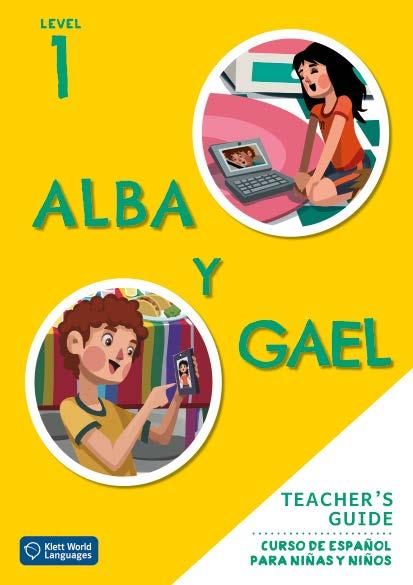
The Workbook of ALBA Y GAEL contains an abundance of activities to practice and expand the grammar and the vocabulary presented in the Student Edition.
The Teacher's Guide of ALBA Y GAEL contains an abundance of annotations created to complement various teaching contexts and styles, save time in class preparation, and implement ways for effective differentiation in instruction and assessment. It also includes answer keys, rubrics, ACTFL standards correlations, ideas and recommendations on how to extend the activities further, and much more.
ALBA Y GAEL includes a comprehensive range of supplementary materials designed to simplify teachers' lives such as:



















Both the Student Edition and the Workbook include downloadable cut-outs available on The KWL Hub.






























In the Student Edition, you will discover 'Gramática Visual' and 'Minidiccionario,' which succinctly summarize the unit's grammatical and lexical content in an engaging and easily accessible manner. These resources are also available for download on The KWL Hub.
ALBA Y GAEL also includes fun board games for grammar and vocabulary revision.
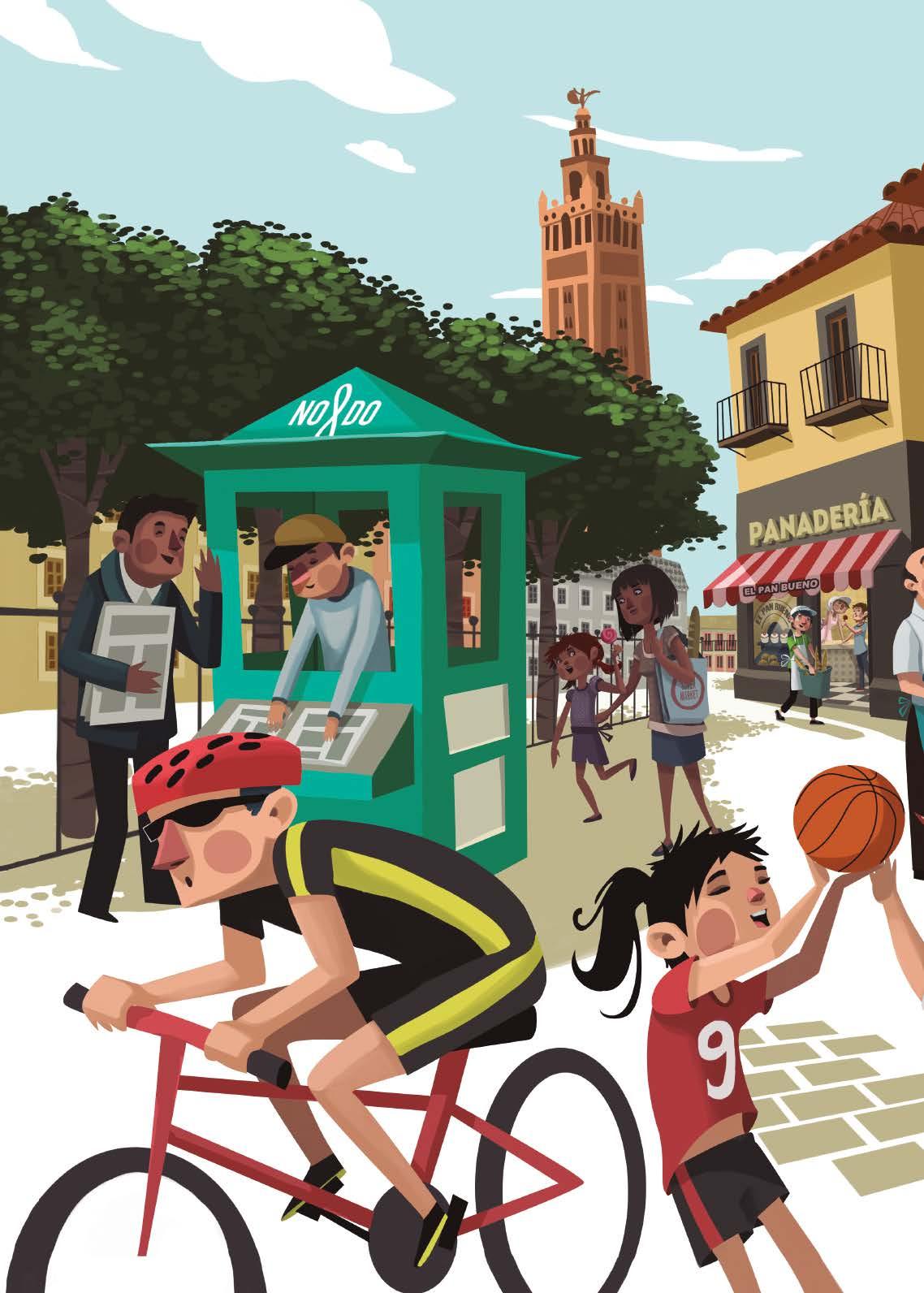

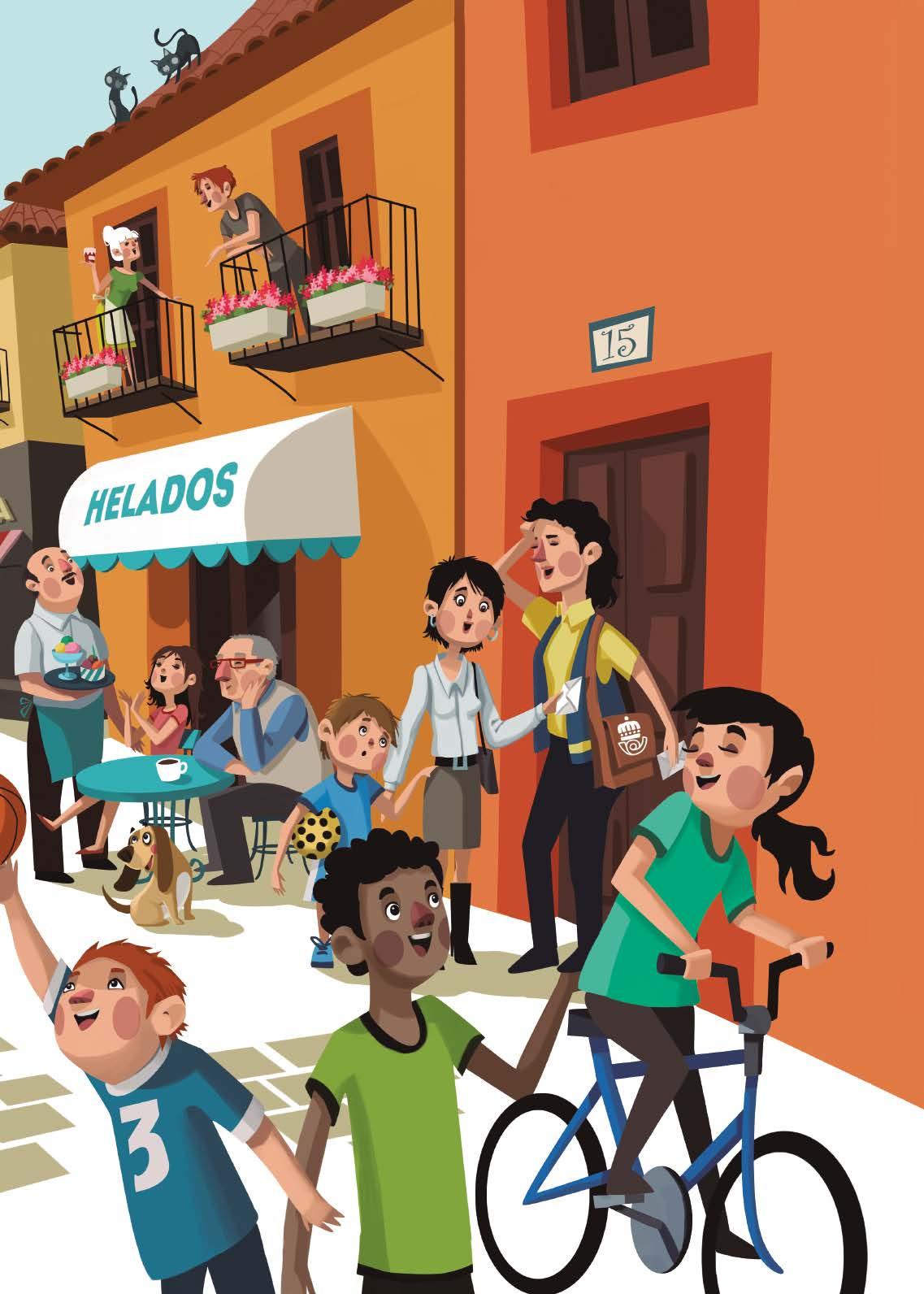
Each unit of ALBA Y GAEL begins with a dynamic two-page illustration that visually introduces the theme and vocabulary of the unit. This opening spread is accompanied by an audio track with sounds that bring the illustration to life and help students both familiarize themselves with the vocabulary and connect the content of the illustration to their own experiences.
Escucha 8 y señala quién habla. 1
The CON LUPA sections practice the material of the unit through activities designed to facilitate learning. Each CON LUPA section begins with three smaller images from the opening illustration that are used to present a meaningful and realistic conversation. From there, students practice, read, listen, act, paint, cut, and sing. The objective of these activities is to teach learners to complete real and significant tasks, and to give them tools for success in the learning of Spanish.

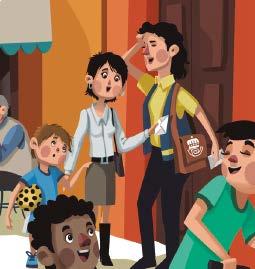

Escucha 9 las frases y repite . Después, lee los diálogos con un compañero o una compañera. 2
Buenos días.
¿Cómo estás? Adiós.
Hola.
Estoy bien, gracias. ¿Y tú? Hasta mañana. a. b. c.
Escucha los diálogos y relaciónalos con las imágenes. 3
● Buenos días, señora López.
❍ Buenos días, Mateo. ¿Cómo estás?
● Bien, gracias. ¿Y usted?
● Hola, Luis.
❍ Hola, Marta.
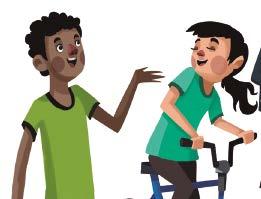
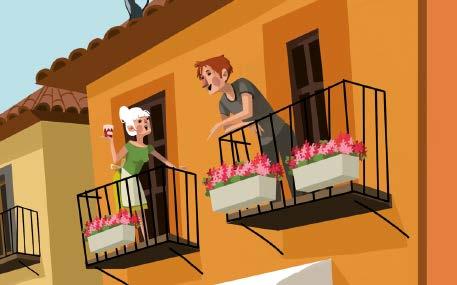

✎ Cuaderno act. 2, 3, 4, 5 4
Ahora tú Completa los diálogos con las frases del recuadro. Después, representa con un compañero o una compañera.
In the Ahora tú activities, students collaborate, interact, and produce oral and written texts. The interactions encourage group work and the topics allow students to work in familiar contexts.
¡Buenos días!
¡Buenas tardes!
¡Buenas noches! Hola.
Adiós.
Hasta mañana.
Hola, Alba.
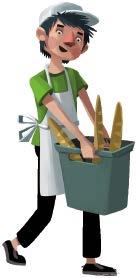
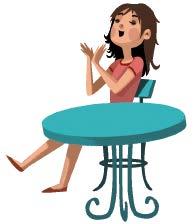
¿Cómo estás?
Estoy bien. ¿Y tú? Estoy mal. ¿Qué tal?
¿Cómo estás?

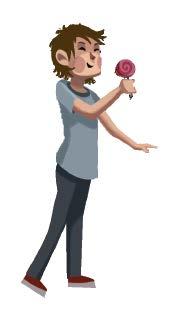


Escucha 11 y señala quién habla. 1

1 2 3


Escucha 12 las frases y repite . Después, lee los diálogos con un compañero o una compañera.
¿Cómo se llama?
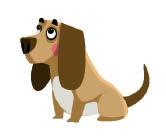
Se llama Piñata.
Y tú, ¿cómo te llamas?
Lee y completa los diálogos. ✎ Cuaderno act. 11
¡Hola! ¿Cómo te llamas?
Me llamo Alba. ¿Y usted?
Me llamo Manolo. ¿Cómo se llama tu perro?
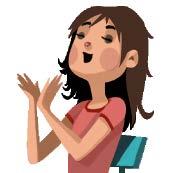
Me llamo Alba.
Se llama Piñata.

veinte
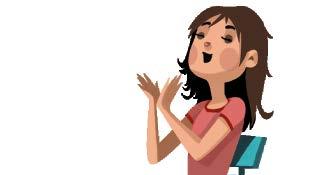

Lee y completa las frases con la información de las etiquetas.
Se llama
1 2 3
Me llamo
● ¿Cómo se llama tu gato?
❍ Jaleo.
● ¿Cómo se llama ella?
❍ Sara.
● Y tú, ¿cómo te llamas?
❍ ¿Yo? Gael.
Se llama



Ahora tú Recorta , colorea y juega con un compañero o una compañera.
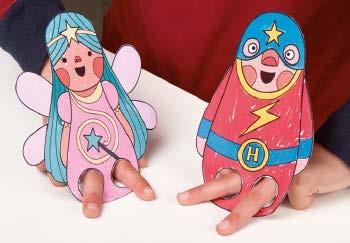
¡Hola! ¿Cómo te llamas?

Colorea los personajes, recorta y prepara un diálogo parecido con un compañero o una compañera.
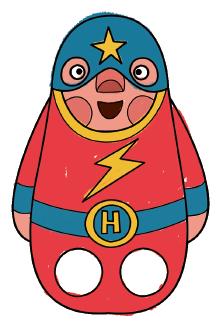
Me llamo Superñam. ¿Y tú?
veintiuno
Escucha y señala quién habla.



Escucha 14 las frases y repite . Después, lee los diálogos con un compañero o una compañera.
¿Eso qué es?

¿De qué color es?
Es una paleta. Es naranja. a. b.
Escucha 15 , lee y canta . La canción de los colores. ✎ Cuaderno act. 9 3
¿Qué es?
ALBA Y GAEL includes songs composed specifically to practice the contents of the units. The melodies are inspired by known and danceable rhythms, while the lyrics are fun and designed for students to learn effortlessly and have fun.
Un caramelo rojo , negro , blanco , rosa y marrón . Naranja, lila, verde y amarillo. Y azul , y azul . Y ahora saltas tú.

veintidós
¿Qué es?
Una pelota roja , negra , blanca , rosa y marrón . Naranja, lila, verde y amarilla. Y azul , y azul . Y ahora cantas tú.

1. Es una carta . blanca

Es un perro


Mira y responde : ¿qué es?

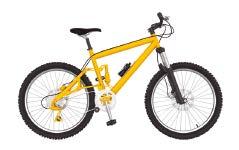
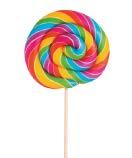
Es una bicicleta .
Es un gato
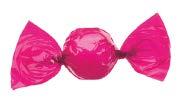

Es .
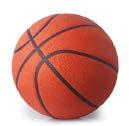
Es . Lee y completa las frases: ¿de qué color es?
Escucha y marca los objetos que escuches.


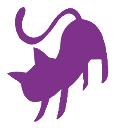
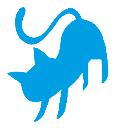
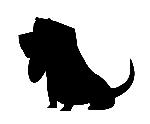



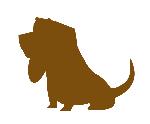
veintitrés
Mira , escucha y repite . ✎ Cuaderno act. 1, 7 1

The MIS PALABRAS section gathers the essential vocabulary from each unit and practices it in a controlled and meaningful way through audiovisual activities, games, and songs.







Colorea las rutas, descubre los colores y completa las frases como en el ejemplo.













Es .
Es .
Es .
Es .
Es .
Es .

Es . un perro un niño una niña un caramelo una cart a una palet a una pelot a un helado una biciclet a un gato


Lee y mira . ✎ Cuaderno act. 10, 12 1
un

MASCULINO un niño un caramelo rojo un caramelo amarillo un caramelo blanco un caramelo negro





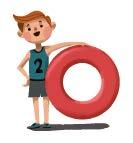
una palet a un caramelo azul verde naranja rosa lila marrón
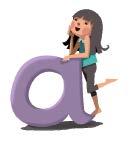
una

una niña
The GRAMÁTICA VISUAL section is designed for students to understand the grammar in a simple and fun way.
una palet a roja una palet a amarilla


una palet a blanca
Learning is reinforced by illustrations, colors, and shapes: ALBA Y GAEL uses a color code to distinguish masculine, feminine, plural, and singular words. In this way, retention of new material is enabled through the use of visual resources.

una palet a negra

Es una paleta verde. Es un caramelo verde. Es una pelota marrón. Es un perro marrón.
Lee y mira . ✎ Cuaderno act. 6 2
LLAMARSE
yo me llamo tú te llamas
él, ella, usted se llama

¿Cómo te llamas?

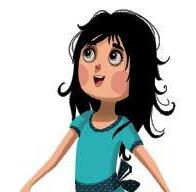
Y él, ¿cómo se llama?
Yo me llamo Alba. veinticinco

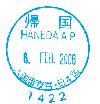


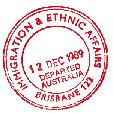
Arte mexicano: Frida Kahlo
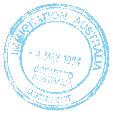



1
Lee y completa las frases.
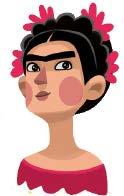
Se llama .
This cultural and interdisciplinary section of ALBA Y GAEL covers topics such as family, music, dance, art, food, and animals.
Es una pintora muy famosa.
Esta es la de Frida.
Es un museo que está en Ciudad de México.
DESCUBRIR EL MUNDO promotes a deeper understanding of the Spanish-speaking world and encourages students to reflect on their own culture.
mexicana Casa Azul Frida Kahlo
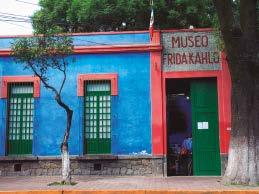
2
3
Mira el autorretrato de Frida Kahlo y habla con tus compañeros.
¿Qué veo?
¿Qué pienso?
¿Qué me pregunto?
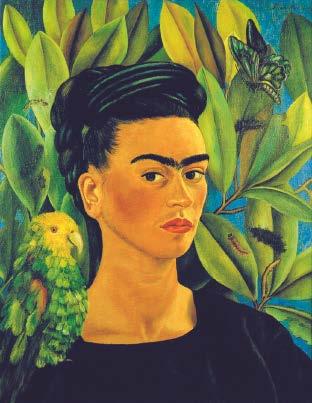
Dibuja tu autorretrato y preséntalo en clase.

veintiséis
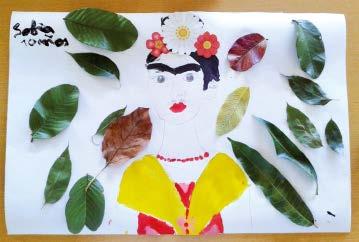
Autorretrato con Bonito, 1943.
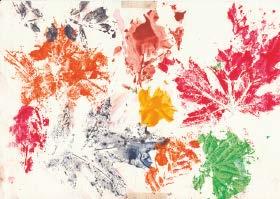
Sé original y utiliza los materiales que más te gustan.

Materiales
• una caja de cartón
• papel de regalo, periódicos, revistas…
• foami o cartulina
• tijeras y pegamento
• lápices y marcadores
• plumas, botones, tela…
Forra la caja con papel. 1
Crea una caja con tu nombre guardar el material de la clase de Español.
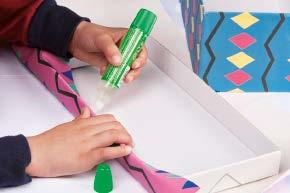
Dibuja y recorta las letras de tu nombre. 2
The primary objective of PRACTICO EL ESPAÑOL is to ensure students are capable of completing a task in which all of the vocabulary and grammar of the unit is activated. This activity also promotes imagination and creativity through oral, written, and artistic expression.
In addition, this final task gives teachers the opportunity to assess the progress of each student and create personalized follow-up plans.
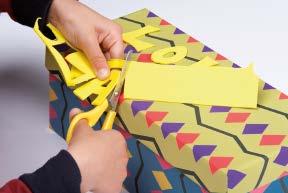
Pega las letras en la tapa de la caja y decórala. 3
Presenta tu caja en clase. 4

¡Hola! ¿Qué tal?


¡Yo estoy muy bien! Me llamo Lola. Esta es mi caja de español. Es azul, amarilla, roja y lila.
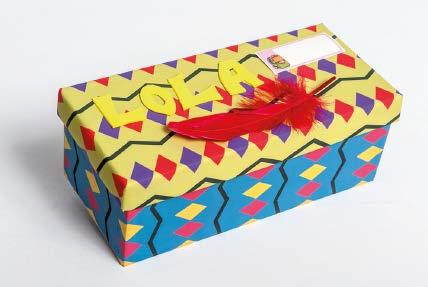
ALBA Y GAEL became a world my students could relate to, creating an engaging language learning experience. With ALBA Y GAEL, I didn’t have to spend as much time creating teaching materials myself. It had everything I needed.
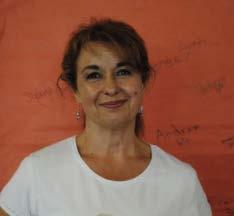
Mary Nieves Ruiz holds degrees in Spanish Philology and English Philology from the University of Leon. With over 15 years of teaching experience, Mary is dedicated to instilling a passion for the Spanish language and culture in her students. Her journey in education began in 2006, and she has been a valuable member of the Meridian community for the past decade. Mary has been using ALBA Y GAEL as a core resource in her teaching since 2023.
Would you like to request a free sample?
Please scan the code!
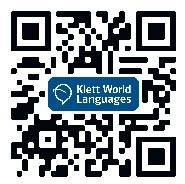

Credits
All images and texts are protected and licensed for ALBA Y GAEL.
© 2025 by Difusión, S.L.
rights reserved
Would you like to learn more about our K-12 catalog? Please scan the code!
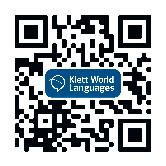
Instagram: klettwl
Facebook: KlettWL
YouTube: KlettWorldLanguages
EAN: 843601673-683-1
LinkedIn: klettwl
Spotify: Klett World Languages
Pinterest: klettwl